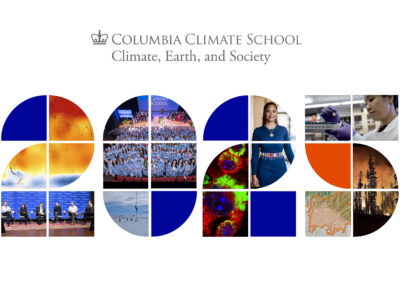How anthropogenic climate change will impact the arid regions of Southwestern North America has implications for the allocation of water resources and the course of regional development. The findings of a new study, appearing in Science, show that there is a broad consensus amongst climate models that this region will dry significantly in the 21st Century and that the transition to a more arid climate may already be underway. If these models are correct, the levels of aridity of the recent multiyear drought, or the Dust Bowl and 1950s droughts, will, within the coming years to decades, become the new climatology of the American Southwest.
The study’s findings have implications on policies and decision making that protects the region from such extreme climate conditions. “‘The arid lands of southwestern North America will imminently become even more arid as a result of human-induced climate change just at the time that population growth is increasing demand for water, most of which is still used by agriculture,” said Richard Seager, Senior Research Scientist at the Lamont-Doherty Earth Observatory and one of the lead authors of the study. “The West, and in particular, the United States and Mexico, need to plan for this right now, coming up with new, well-informed and fair deals for allocation of declining water resources.”
Projections of anthropogenic, or man-made, climate change conducted by 19 different climate modeling groups around the world, using different climate models, show widespread agreement that Southwestern North America, and the subtropics in general, are heading toward a climate even more arid than now. The models show that human-induced aridification becomes marked early in the current century. In the Southwest the levels of aridity seen in the 1950s multiyear drought, or the 1930s Dust Bowl, become the new climatology by mid-century: a perpetual drought.
According to the study, as the planet warms, the Hadley Cell, which links together rising air near the Equator and descending air in the subtropics, expands poleward. Descending air suppresses precipitation by drying the lower atmosphere so this process expands the subtropical dry zones. At the same time, and related to this, the rain-bearing mid-latitude storm tracks also shift poleward. Both changes in atmospheric circulation, which are not fully understood, cause the poleward flanks of the subtropics to dry.
In contrast to historical droughts, future drying is not linked to any particular pattern of change in sea surface temperature but seems to be the result of an overall surface warming driven by rising greenhouse gases. Evidence for this is that subtropical drying occurs in atmosphere models alone when they are subjected to uniform increases in surface temperature. “Our study emphasizes the fact that global warming not only causes water shortage through early snow melt, which leads to significant water shortage in the summer over the Southwest, but it also aggregates the problem by reducing precipitation,” said Mingfang Ting, Doherty Senior Research Scientist also at Lamont-Doherty and one of the study’s co-authors.
Drying of arid lands in the southwestern United States and northern Mexico will have important consequences for water resources, regional development and cross border relations and migration. According to the models the drying should already be underway and, over the length of time it takes to plan significant changes in water resource engineering and allocation (years to a few decades), will become well established.
The study also shows that, in addition to the Southwestern North America other land regions to be hit hard by subtropical drying include southern Europe, North Africa and the Middle East as well as parts of South America.
The study was conducted in close collaboration with scientists at the NOAA Geophysical Fluid Dynamics Laboratory. This collaboration emphasizes the close ties between Columbia University and NOAA that has developed since the establishment of the NOAA Cooperative Institute for Climate Applications and Research at Lamont in 2003.



